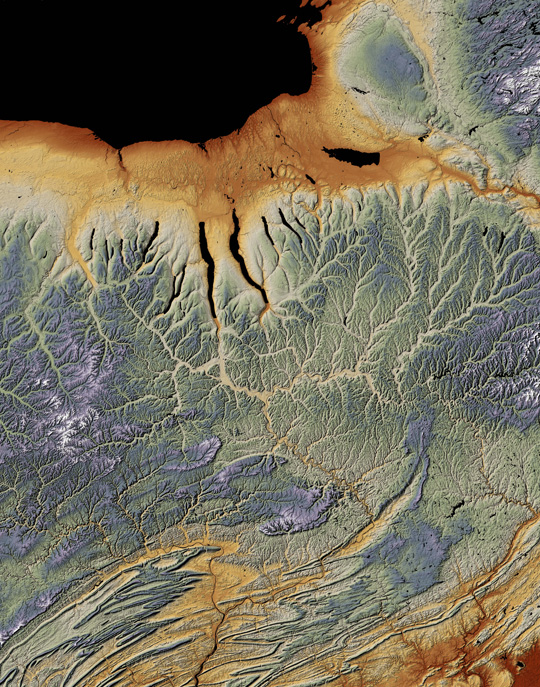
Transitions by Jay Hart, used with permission of the artist.
‘Terrain artist’ Jay Hart, from just up the road in Trumansburg, N.Y., has an exhibition of his large-format prints at Cornell’s Mann Library in November and December. Jay’s art has its roots in his training in plant ecology, remote sensing, and geomorphology and decades of work using aerial photography and satellite imagery to answer scientific questions.
Apparently the beauty of this planet wasn’t lost on him either.
Across five continents my mapping experiences gave me a strong curiosity for terrain processes and for the aesthetics of landform. In recent years I have been exploring as art the countless examples of the earth’s broadscale beauty.
Visit Jay’s online gallery. Each image is fascinating in its own way. And every picture tells a story. For now, Transitions is my favorite, because it’s from my neck of the woods and I know the story.
I’ve only viewed Jay’s work online. But you can bet I’m going to see them in person because I suspect that their impact is even more dramatic in the flesh.
Update: If you like these, Pam at Tales from the Microbial Laboratory recommends the batiks of various aerial/satellite images (mostly coastlines) by Mary Edna Fraser. Visit Mary Edna’s Islands from the Sky website.

